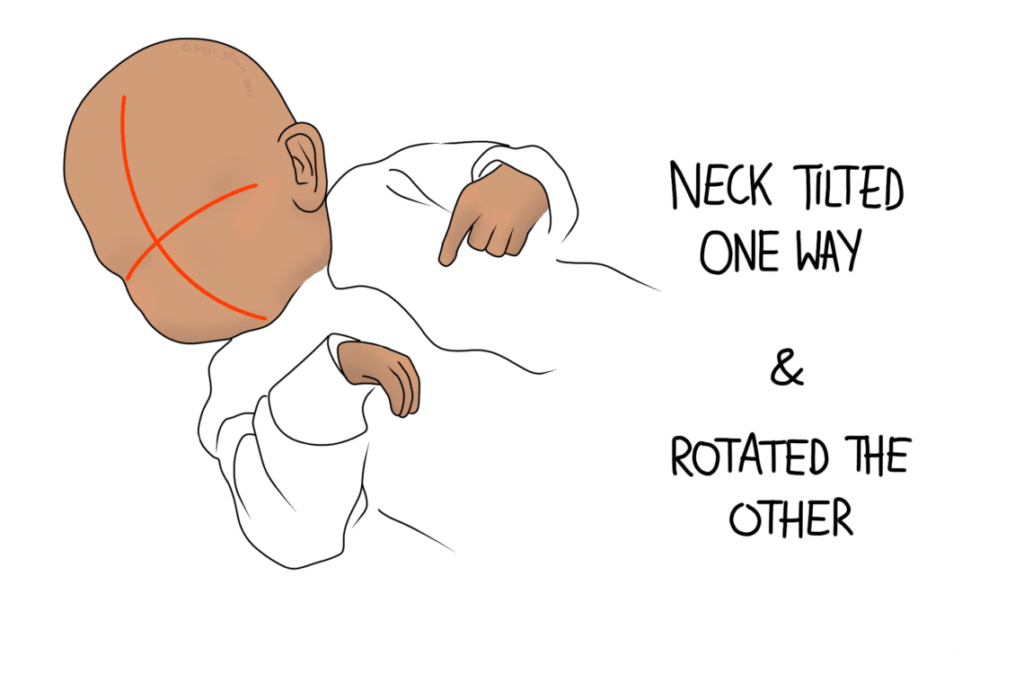

Torticollis, in adults and babies, is a condition involving neck tightness and reduced movement. This article will focus on torticollis among infants, but some of the information provided will also apply to adults.

Typically, torticollis is caused by spasm of the SCM muscle. This is the muscle that sticks out on the front of the neck when you rotate your head. In addition to rotation in one direction, it is responsible for bending the neck in the other. Therefore, when in spams, it causes rotation one way and side-bending in the other.
While a baby is very young and lacks neck control, signs can be hard to spot. Sometimes it helps to look at pictures you’ve taken of your child to see if they favour rotation in one direction. It may also be more obvious if:
True congenital torticollis is present from birth (or before). There are controversies about whether the details of the birth have an effect on this. Muscles respond to the demands put on them, so if a baby has their neck in an asymmetric position in the womb, some muscles will tighten up.
Your paediatric osteopath will screen for sternomastoid “tumour” of infancy. Despite the worrying name, it is not a cancer. “Tumour” literally just means mass, and in this case it is a fibrous mass within the SCM muscle. It appears in the first few weeks of life, and in about 50% of cases, it will resolve on its own. Some children who have this condition will have torticollis at the same time, or after it resolves. Your osteopath can help to manage the tight muscle.
Young babies have especially soft skulls. While they lack the mobility to spend much time sitting or crawling, they will likely sit in positions where there is pressure on the back or side of their head. If their neck mobility is reduced, they will have more pressure on one spot, as turning the head is uncomfortable. As a result, they may develop a flat spot on the head. This is called plagiocephaly.
Where tight muscles are involved, your paediatric osteopath may be able to help. You can expect gentle techniques to massage and stretch the muscle during your appointments. Where necessary, they will also work gently through the affected joints. Exercises or advice may also be appropriate. Where safe to do so, your osteopath may advise that you help your baby to spend some time every day in a supported sitting position. Plenty of tummy time is usually advisable too, as both positions allow the neck muscles to begin to strengthen.